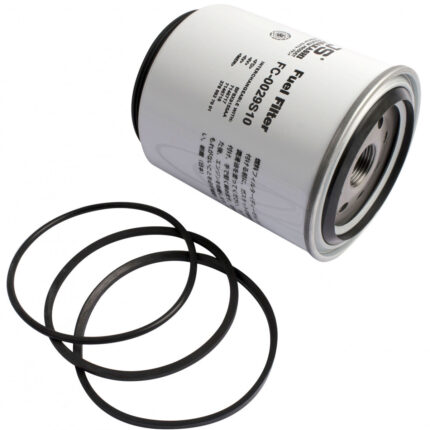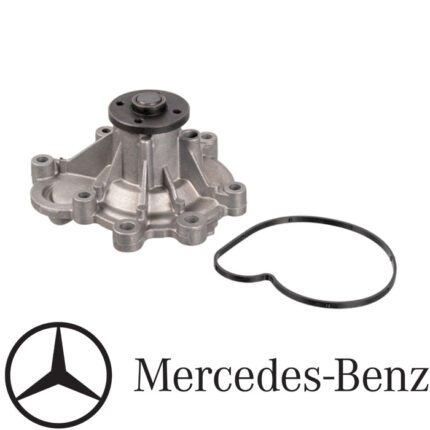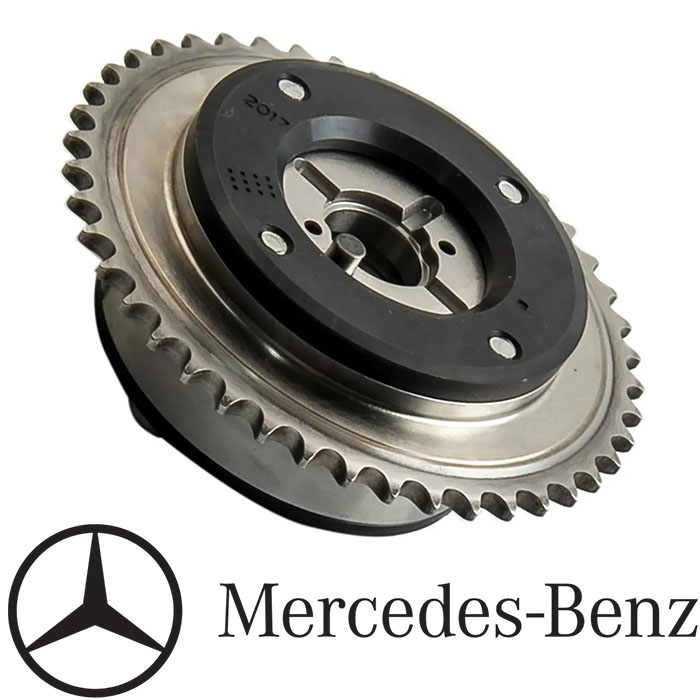-7%
Get Mercedes Benz M271 Intake Camshaft Adjuster 2710500800 in Kenya
The Intake Camshaft Adjuster is a vital component in modern engines, particularly those equipped with Variable Valve Timing (VVT) systems. It’s responsible for adjusting the timing of the intake camshaft, controlling when the intake valves open and close during each cycle of the engine.
This adjustability helps optimize engine performance, fuel efficiency, and emissions across different driving conditions — from low-speed cruising to high-speed acceleration.
In simple terms, the intake camshaft adjuster acts like a smart manager, fine-tuning the timing of the intake valves to make sure the engine breathes at its absolute best.
📊 Where is it Located?
The intake camshaft adjuster sits at the front of the cylinder head, connected to the intake camshaft and driven by the timing chain or timing belt. In most cases, it works hand-in-hand with an oil control valve (OCV) or VVT solenoid, which controls oil flow into the adjuster to make the timing changes.
🔗 Key Functions of the Intake Camshaft Adjuster
✅ Optimizes intake valve timing based on engine speed, load, and temperature.
✅ Helps achieve the ideal air-fuel mixture for combustion.
✅ Enhances engine power at high RPMs.
✅ Improves fuel economy at low RPMs.
✅ Reduces emissions by ensuring efficient combustion.
✅ Enhances throttle response and overall driveability.
⚙️ How It Works – The Science Behind It
The camshaft adjuster alters the phasing of the intake camshaft relative to the crankshaft. This means it changes the timing of intake valve opening and closing.
Here’s how the process flows:
1️⃣ Sensors monitor engine load, RPM, and temperature.
2️⃣ The ECU (engine control unit) calculates the optimal valve timing.
3️⃣ The ECU activates the VVT solenoid, which sends oil into the camshaft adjuster.
4️⃣ Hydraulic pressure rotates the intake camshaft slightly forward or backward.
5️⃣ This advances or retards intake valve timing, fine-tuning engine performance for the current conditions.
The adjuster’s movements happen in real-time, constantly optimizing performance — from idle to highway speeds.
⚡ Types of Camshaft Adjusters
There are a few designs used in different vehicles:
🔹 Hydraulic Camshaft Adjusters – Most common, using oil pressure to shift timing.
🔹 Electromechanical Adjusters – Found in some newer engines, combining oil and electric actuation.
🔹 Single-VVT Systems – Adjust only the intake camshaft.
🔹 Dual-VVT Systems – Adjust both intake and exhaust camshafts for even greater control.
💡 Benefits of a Fully Functional Intake Camshaft Adjuster
Keeping the intake camshaft adjuster in top shape delivers several benefits:
✅ Smoother Idle – Timing is adjusted to reduce vibration at low RPM.
✅ More Power on Demand – At high RPMs, valve timing optimizes airflow for maximum performance.
✅ Better Fuel Efficiency – Valve timing adjusts to reduce unnecessary fuel consumption.
✅ Lower Emissions – Cleaner, more complete combustion at all speeds.
✅ Enhanced Engine Longevity – Reduced strain on valves and pistons thanks to precise timing.
🚨 Symptoms of a Faulty Intake Camshaft Adjuster
A failing or faulty intake camshaft adjuster can throw off your engine’s performance and trigger warning signs like:
❌ Check Engine Light (CEL)
❌ Rough Idle or Stalling
❌ Reduced Power – Poor performance during acceleration.
❌ Increased Fuel Consumption
❌ Knocking Noises from the timing area
❌ Delayed Throttle Response
❌ Engine Misfires – Due to improper air-fuel mixture.
❌ Error Codes like P0011 or P0012 – Indicating cam timing problems.
Ignoring these symptoms can lead to timing chain wear, poor combustion efficiency, and even severe engine damage.
🔎 Common Causes of Failure
The intake camshaft adjuster can fail due to several factors:
1️⃣ Oil Quality and Maintenance – Dirty oil can clog the adjuster’s oil channels.
2️⃣ VVT Solenoid Failure – If the solenoid can’t control oil flow, the adjuster won’t function properly.
3️⃣ Timing Chain Wear – Excessive slack affects camshaft phasing.
4️⃣ Contaminants – Metal shavings or sludge can block hydraulic passages.
5️⃣ Physical Damage – Impact during servicing or accidents.
🔧 Inspection and Diagnosis
At OneStop Garage, we recommend checking the intake camshaft adjuster during:
✅ Major Services
✅ Timing Chain/Belt Replacement
✅ Any Engine Performance Issues
Tools used include:
🔹 OBD Scanners – To read camshaft timing error codes.
🔹 Oil Pressure Testers – To check oil flow to the adjuster.
🔹 Timing Tools – To manually verify camshaft phasing.
🔄 Replacement Process – What to Expect
Replacing the intake camshaft adjuster is labour-intensive, as it involves:
1️⃣ Removing engine covers, timing components, and valve cover.
2️⃣ Locking the camshaft and crankshaft in place.
3️⃣ Removing the faulty adjuster.
4️⃣ Installing a new adjuster with new seals/gaskets.
5️⃣ Reassembling and timing the engine.
6️⃣ Testing with a scanner to verify proper camshaft phasing.
It’s highly recommended to also:
✅ Change the VVT solenoid.
✅ Inspect/replace the timing chain or belt if worn.
✅ Use fresh high-quality engine oil to protect the new adjuster.
🏆 Choosing the Right Replacement
When shopping for a new intake camshaft adjuster, ensure:
✅ Exact Match to Your Engine Code
✅ OEM Quality or Reputable Aftermarket Brand
✅ Compatibility with Existing Timing Components
✅ Complete Kit with Seals and Hardware
Brands like FEBI, INA, Pierburg, Gates, or Genuine OEM offer reliable quality.
🛢️ Maintenance Tips to Prolong Lifespan
To extend the lifespan of your intake camshaft adjuster:
✅ Regular Oil Changes – Use recommended synthetic oil.
✅ Clean Oil Channels – Especially if sludge build-up occurs.
✅ Use Quality Oil Filters – To keep contaminants out.
✅ Avoid Long Overdue Services – Sludge kills VVT components.
✅ Periodic Diagnostic Scans – Catch minor timing issues early.
Why OneStop Garage Recommends Intake Camshaft Adjuster Inspections
We advise:
📅 Inspecting at every major service (every 40,000 km or as per the vehicle manual).
📅 Scanning for timing errors when Check Engine Light appears.
📅 Immediate inspection if experiencing rough idle, loss of power, or strange noises.
Follow us on Facebook for more parts.




Reviews
Clear filtersThere are no reviews yet.